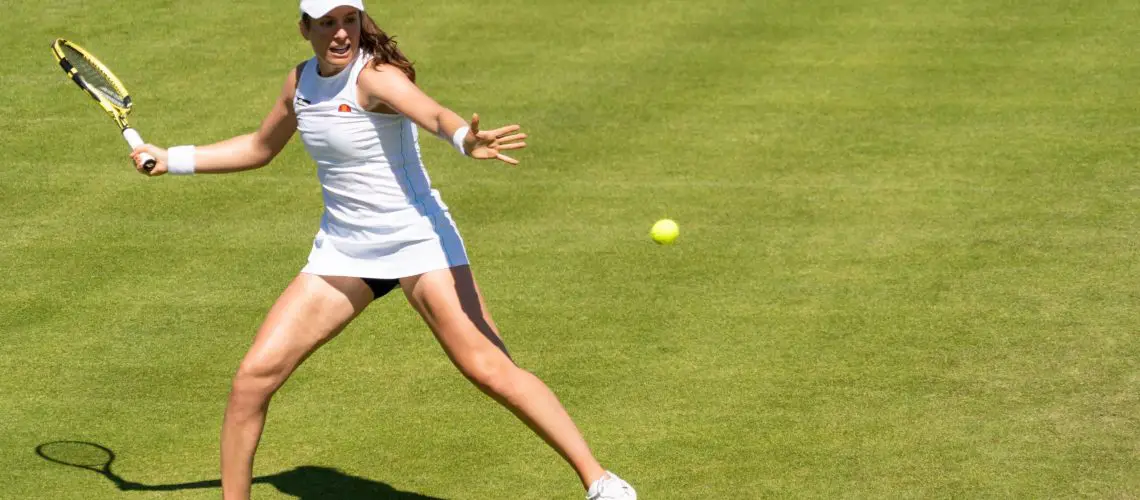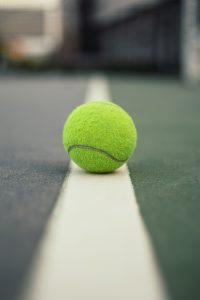We may earn money or products from the companies mentioned in this post.
Tennis Strings: Essential Gear for the Game

When it comes to the game of tennis, every little detail matters From the grip of your racket to the shoes you wear on the court, each element plays a crucial role in your performance One often overlooked aspect is your tennis strings These thin, yet mighty components are responsible for delivering power and control to your shots
The lifespan of tennis strings can vary depending on several factors The type of string material, frequency of play, playing style, and maintenance all contribute to how long they will last Understanding these factors and knowing how to extend their lifespan can save you money and ensure optimal performance on the court
Factors Affecting Tennis String Lifespan
1
Type of String Material:
Tennis strings come in various materials such as natural gut, synthetic gut, multifilament, polyester, and hybrid combinations Each material has its own unique characteristics that affect durability and playability
2
Frequency of Play:
The more frequently you play tennis, the faster your strings will wear out Intense training sessions or competitive matches put more stress on the strings, causing them to lose tension and eventually break
3
Playing Style:
Aggressive players who hit with heavy topspin or frequently use slice shots put more strain on their strings compared to players with a more controlled playing style
4
Maintenance:
Proper care and maintenance can significantly extend the lifespan of your tennis strings Regularly inspecting them for signs of wear or damage and cleaning them after each match can help preserve their quality
A Guide to Maximizing Tennis String Lifespan
To make sure your tennis strings last as long as possible, here are some tips to follow:
-
Use the Right String Tension:
The tension at which you string your racket affects how quickly your strings wear out Consult with a professional stringer to find the ideal tension for your playing style -
Choose the Right String Material:
Different string materials have varying levels of durability Consider factors such as playability, power, and control when selecting the right string material for your game -
Rotate Your Rackets:
Using multiple rackets and rotating them during matches or practice sessions can distribute the stress on the strings more evenly, prolonging their lifespan -
Avoid Excessive Moisture or Heat:
Extreme humidity or high temperatures can weaken tennis strings over time Store your rackets in a cool, dry place to prevent unnecessary damage -
Maintain Regular Inspections and Replacements:
Regularly check your strings for signs of wear, fraying, or loss of tension Replace them promptly when necessary to maintain consistent performance
In conclusion, understanding how long tennis strings last and implementing strategies to maximize their lifespan is essential for any serious tennis player By choosing the right string material, maintaining proper care and following these tips, you can ensure that your tennis strings serve you well on the court for longer periods of time
Factors Affecting the Lifespan of Tennis Strings

Tennis strings play a vital role in a player’s performance, providing power, control, and feel However, the lifespan of tennis strings can vary depending on various factors Let’s explore some of these factors:
Type of String Material
The type of string material used greatly influences the durability and longevity of tennis strings There are several types to choose from:
-
Natural Gut:
Known for its excellent playability and comfort, natural gut strings are made from cow or sheep intestines While they offer exceptional feel and power, they tend to have a shorter lifespan compared to other materials -
Synthetic Gut:
Synthetic gut strings are made from nylon or polyester fibers They provide a good balance between playability and durability, making them a popular choice among recreational players -
Multifilament:
Multifilament strings are constructed by bundling together numerous filaments to create a softer feel similar to natural gut They offer good power and comfort but may not last as long as polyester or hybrid combinations -
Polyester/Monofilament:
Polyester strings are known for their durability and control They are often used by professional players due to their ability to generate spin However, they can be less forgiving on the arm compared to other materials -
Kevlar/Hybrid Combinations:
Kevlar is an extremely durable material that is sometimes used in hybrid combinations with other strings for added durability at the expense of some playability
String Tension and Gauge
The tension at which tennis strings are strung and the gauge, or thickness of the string, also impact their lifespan:
-
How Tension Affects Durability and Playability:
Higher string tensions generally result in more control and less power, but they can also cause strings to break more frequently Lower tensions provide more power but may sacrifice some control Finding the right balance is crucial for both performance and longevity -
Optimal Tension for Different Types of Players:
The optimal string tension varies depending on a player’s skill level, playing style, and personal preference For recreational players, a lower tension may be suitable for improved power and comfort Advanced players often prefer higher tensions for better control -
String Gauge Explained:
String gauge refers to the thickness of the string Thicker gauges tend to be more durable but offer less playability and feel Thinner gauges provide enhanced feel and spin potential but are generally less durable
Frequency of Play
The frequency at which a player uses their tennis strings can significantly impact their lifespan:
-
Professional vs Recreational Players:
Professional players who practice daily or compete regularly will naturally put more stress on their strings compared to recreational players who play occasionally Therefore, professional players may need to restring their rackets more frequently to maintain optimum performance -
Playing Style Impact on String Durability:
The way a player hits the ball also affects the durability of their strings Aggressive hitters who generate heavy topspin or hit with excessive force may experience faster string breakage compared to those with a smoother playing style
Understanding the factors that influence the lifespan of tennis strings can help players make informed decisions when it comes to selecting the right string material, tension, and gauge Regular maintenance and restringing will also contribute to prolonging the life of tennis strings, ensuring optimal performance on the court
Maintaining Tennis Strings For Longevity

Tennis strings are an essential component of your racquet, directly influencing your performance on the court To ensure optimal playability and longevity, it’s crucial to take proper care of your strings In this article, we’ll explore some key techniques for maintaining tennis strings to help you get the most out of your equipment
Regular Restringing
1 Reasons for restringing:
Over time, tennis strings lose tension and elasticity due to regular use and exposure to various elements such as dirt, sweat, and weather conditions This can result in decreased power, control, and comfort during gameplay Restringing your racquet helps restore these qualities, enabling you to perform at your best
2 How often should you restring your racquet:
The frequency of restringing depends on factors such as playing style, string type, and how often you play As a general guideline, it’s recommended to restring every 40-50 hours of play or at least once every three months for regular players However, if you’re a competitive player or notice significant loss in performance earlier than that timeframe, consider restringing more frequently
Proper Storage and Care
1 Protecting your racquet from extreme temperatures:
Extreme temperatures can have detrimental effects on your tennis strings by causing them to become brittle or lose tension faster than usual Avoid leaving your racquet in extremely hot or cold environments like a car trunk or direct sunlight for extended periods of time
2 The use of vibration dampeners:
Vibration dampeners are small accessories that can be inserted between the main strings to absorb vibrations upon impact with the ball Besides providing a more comfortable feel, they can also help reduce stress on the strings, prolonging their lifespan Experiment with different types of dampeners to find the one that suits your personal preference and playing style
Choosing the Right String for Your Playing Style
1 Balancing durability, power, control, and comfort:
When selecting tennis strings, it’s essential to consider your playing style and preferences Different string materials and constructions offer varying levels of durability, power, control, and comfort For example, polyester strings are known for their durability but may sacrifice some comfort compared to multifilament or natural gut strings Finding the right balance that suits your game is key
2 Consulting a professional or experienced player for advice:
If you’re unsure about which tennis strings to choose or need personalized recommendations based on your playing style, it’s always beneficial to consult with a professional stringer or experienced player They can provide valuable insights and suggest suitable options that align with your needs
By following these tips for maintaining tennis strings, you’ll not only extend their lifespan but also enhance your on-court performance Remember to restring regularly, store your racquet properly, and select strings that complement your playing style With proper care and attention, you’ll be able to enjoy consistent playability from your tennis racquet for years to come
Conclusion

In this article, we have explored the various factors to consider when selecting tennis strings By understanding and identifying your playing style and preferences, you can make an informed decision about which strings will enhance your performance on the court
Summary of Key Points
Throughout the article, we have discussed several key points:
- The importance of choosing the right gauge and tension for your playing style
- The impact of string materials on power, control, and durability
- The benefits of experimenting with different string setups to find what works best for you
Playing Style and String Selection
Your playing style plays a crucial role in determining the type of strings that will suit you best Whether you are an aggressive baseline player or a serve-and-volley specialist, understanding how different strings affect spin, power, and control can greatly enhance your game Consider factors such as string gauge and tension to optimize your performance on the court
Racquet Care and Maintenance
Investing in proper racquet care is essential for maximizing the lifespan of both your racquet and its strings Regularly inspecting for signs of wear and tear, replacing damaged strings promptly, and storing your racquet in a suitable environment can significantly extend its longevity Remember to clean your racquet after each use to remove dirt and sweat buildup that can lead to performance decline
In conclusion, by understanding yourself as a player, considering the attributes of different tennis strings, and taking good care of your equipment, you can elevate your game to new heights So go out there with confidence knowing that you have made an informed choice about your tennis strings – they just might be the missing piece to unlocking your full potential on the court!
Useful Links

Do Tennis Strings Go Bad? Know When You Need Fresh …
How To Tell If Tennis Strings Are Dead? How Long Do …
When is it time for a new tennis racquet
Should I replace my tennis strings after a year in storage?
How Often Should You Re-String Your Racquet?
Best tennis string for intermediate players
How long does a good tennis racquet last?
How to String a Tennis Racquet: 13 Steps (with Pictures)
Tennis String Guide
How often should you restring your tennis racquet?
Mastering Tennis Racquet Stringing
Do Tennis Strings Go Bad Or Expire?
Natural gut tennis racket strings: The history, myths and …
How to String a Tennis Racket
How long does soft poly last? – Evoke Tennis
4 Tips to Make Your Tennis Racket Last Longer
Strings (tennis)
String Breakers Dilemma. – :
When do you know to change your tennis strings?
How to String a Tennis Racket | Step by Step (with Pictures)






